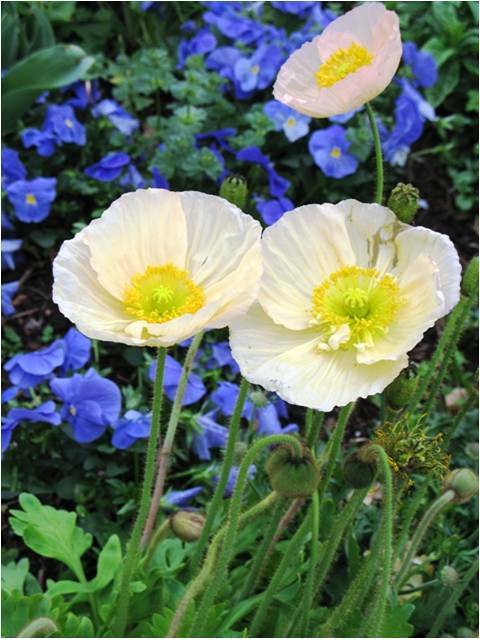Growing Iceland Poppies in Texas
January 29, 2010
Cool Season Color
Iceland Poppies
As a horticulturist, and someone who is greatly passionate about plants, I’m often asked what my “favorite” plant or flower is. Usually, I just laugh. How could I pick just one? But this little corner of mine here in the e-newsletter is titled “My Favorite Things” so I do try to whittle down to the best of the best for you when I can. If you backed me into a corner and asked me “what is your favorite cool-season annual, or else…” I would be compelled to answer Iceland Poppy, or Papaver nudicaule.
What is not to love about this boreal beauty? On sunny days, light shines through the brightly colored, paper-thin petals creating a brilliant display in the garden. The flowers are even sweetly scented. Every part of the poppy plant from the silvery foliage to the unique furry flower buds, offers a bounty of interest. They are the perfect companion for other cool-season plantings such as parsley, kale, pansies and violas. In their natural state, Papaver nudicaule is usually found in shades of white and yellow. The recessive colors of orange, pink and red are brought out through selection and all colors are generally offered as a mixin the garden center.

Iceland poppies are technically a perennial, but only behave as such in the Northern most parts of the United States and into Canada. In our climate, Iceland Poppies should be treated as a cool season annual, or biennial if you will. In Texas, it’s best to plant Iceland Poppies in the fall, along with your pansies and violas. This allows them to put on a larger root system and thus a bigger spring show of blooms. Plants will bloom in the fall and until the first hard frost. Often, they will continue putting on blooms through the winter. Hard frosts will nip the blooms, but won’t hurt the plants. In spring, you’ll be rewarded with a burst of blooms in late February or early March, to accompany your tulips and daffodils. Plants will continue to flower until temperatures heat up in mid- to late-May.
Iceland Poppies don’t like the heat and will die off with the onset of summer. They are generally very easy to grow and don't require extra care. The one thing they don't appreciate is wet feet. Make sure your soil drains well and you don't provide too much extra irrigation in the winter months. Mulching plants with about 1-inch of expanded shale can help cut down on excess moisture around the root zone.
You can plant Iceland poppies right now and then again in October through November. I hope you enjoy these beauties in your garden as much as I do in mine!

